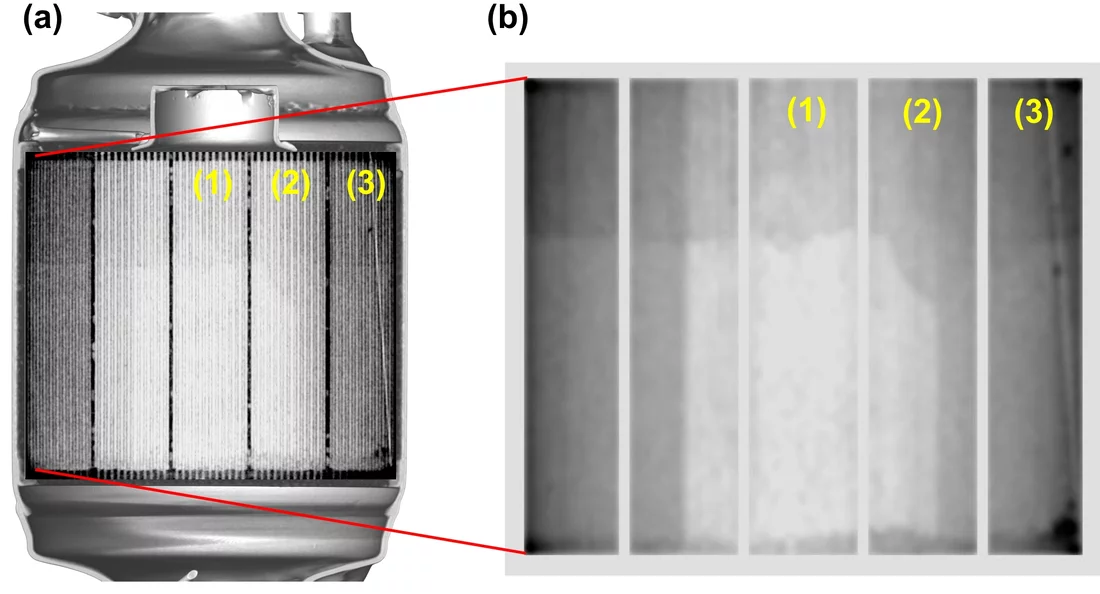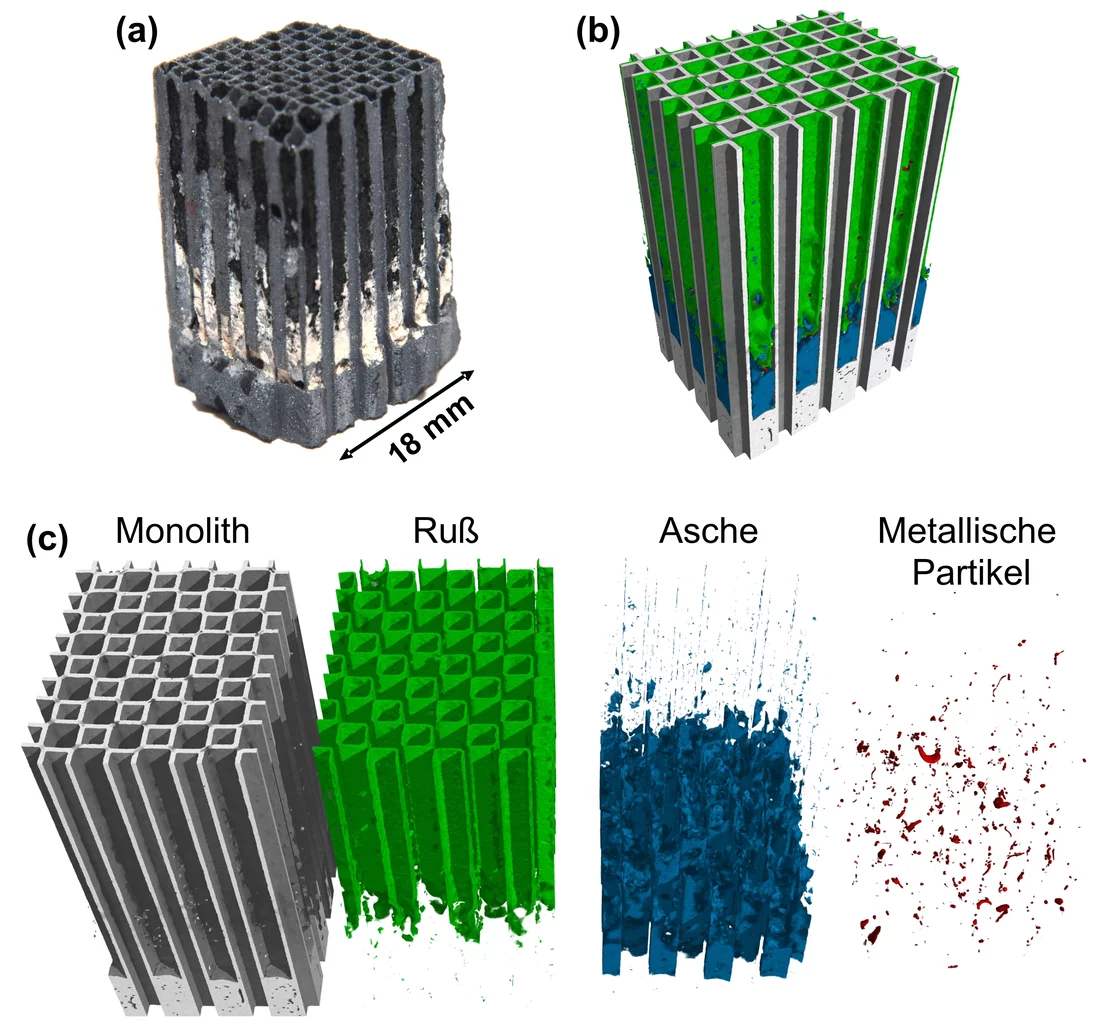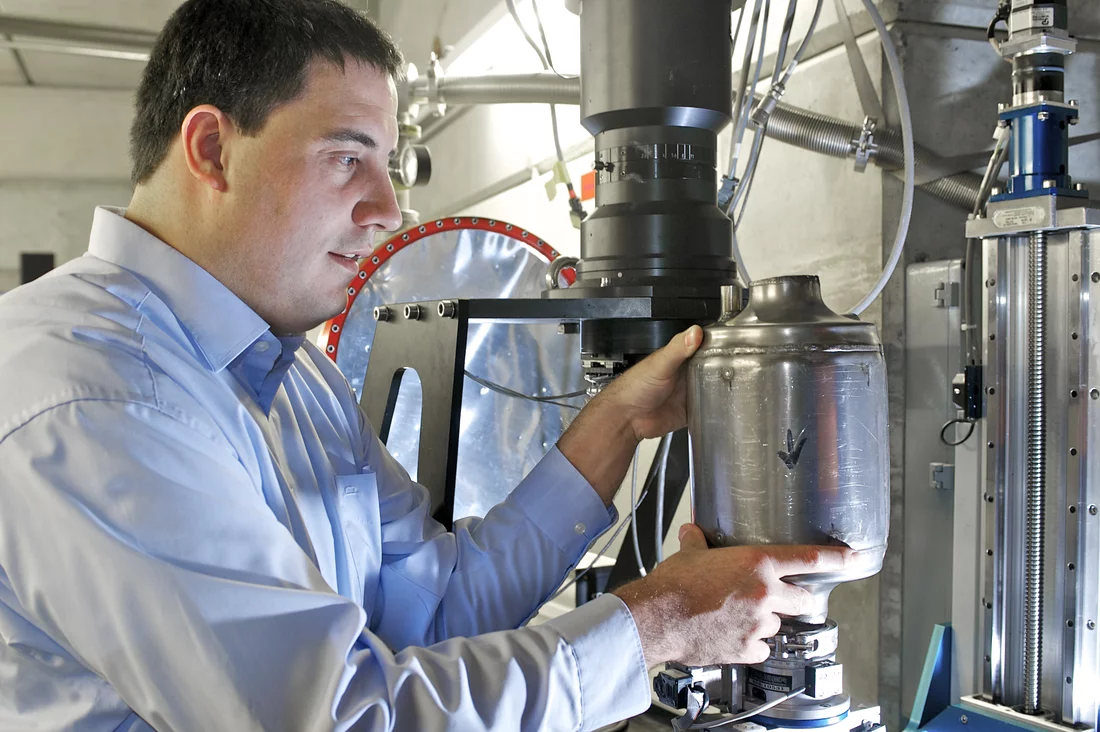Nowadays, all diesel motor vehicles are fitted with a particulate filter as standard, as part of the Euro5 Emission Standard. These filters prevent the harmful soot and ash particles in exhaust gases from entering the environment. However, within the automotive industry, exactly how the soot particles are deposited inside these filters has not been known. Now, using a special imaging technique - Neutron Tomography - researchers at the Paul Scherrer Institute [PSI] have made the soot inside filters visible, creating a foundation from which these filters can be optimised and developed further.
Particulate filters can now be found in mostly all new diesel vehicles. This is a statutory requirement, as the particles in exhaust gas consist mainly of harmful soot and ash, and should not be allowed to escape into the environment. Inside these filters, the exhaust gases pass through a system of honeycomb-like channels, in which only alternate ‘honeycombs’ have an exit. Because of this, the exhaust gas has to penetrate into the porous walls between the honeycombs before it can flow any further. Soot and ash particles cannot pass through these pores and are therefore deposited onto the walls.
After a few hundred kilometres, a filter will be fully loaded with soot. And as a lot of soot has been deposited, the filter will have to be regenerated. To achieve this, the temperature of the exhaust gas is increased, and the soot is burned to form CO2. Only the unburned ash remains inside the filter. More and more ash builds up over time. After about 180,000 kilometres, the filter will be full of ash, and will need to be replaced.
Unknown soot distribution
Automobile manufacturers and suppliers have previously only been able to guess or determine indirectly the details of what takes place inside these filters, and where the soot is deposited. The soot can be seen by sawing the filter open. However, some of the soot deposits will already have been disturbed by the sawing process. Particle filters can be examined non-destructively using X-ray measurements, but this can reveal only the distribution of ash. Soot is composed of carbon. This cannot be seen on X-ray images.
Neutron tomography reveals soot distributions clearly
This problem has now been overcome. Using Neutron Tomography, the PSI can now make soot distributions visible, as well as ash distributions. Christian Gruenzweig, a Physicist at the PSI, puts it in a nutshell: Although these components are called soot particulate filters, until now, it has been impossible to prove exactly where the soot was deposited non-destructively. We are the first to be able demonstrate the actual sites of soot deposition.
Neutrons have an advantage over X-rays in that they are sensitive to carbon, but more importantly, they have a significantly higher sensitivity to hydrogen when compared to X-rays. Christian Grunzweig explained: Soot shows up well, because it contains small amounts of hydrogen, which come from the unburned fuel components
.
Depending on the characteristics of the material being irradiated, the neutron beam will be attenuated to some extent as it passes through the sample. By measuring this attenuation, researchers can reconstruct a detailed picture of the soot and ash distribution. So we can at last make the exact point inside the filter where the soot is deposited visible.
With these measurement results from the PSI, the automotive and distributor industries have gained new insights into exactly how soot and ash are distributed within filters. From this, engineers will be able to examine what filter geometries need to look like to ensure exhaust gases are distributed evenly inside the whole filter – along with the deposits. They also hope to determine how exhaust gases should flow optimally inside the filter. Ideally, exhaust gases should be evenly distributed throughout the whole filter and the deposits should be spread correspondingly evenly. This would ensure that these expensive filters functioned optimally, and would need to be replaced less frequently.
About PSI
The Paul Scherrer Institute develops, builds and operates large, complex research facilities, and makes them available to the national and international research community. The Institute's own key research priorities are in the investigation of matter and material, energy and the environment; and human health. PSI is Switzerland's largest research institution, with 1500 members of staff and an annual budget of approximately 300 million CHF.
Contact
Dr. Christian Gruenzweig, Project Leader for Industrial Applications of Neutron Imaging,Paul Scherrer Institute, 5232 Villigen, Switzerland;
Telephone: +41 56 310 46 62, E-Mail: christian.gruenzweig@psi.ch
Original Publication
Visualisierung der Russ- und Ascheverteilung in Dieselpartikelfiltern mittels Neutronen Imaging( Visualisation of the soot and ash distribution in diesel particulate filters using neutron imaging. )
Gruenzweig C, Mannes D, Kaestner A, Vogt M. .
MTZ Motortechnische Zeitschrift 73 (2012), No. 4, S. 326-331




